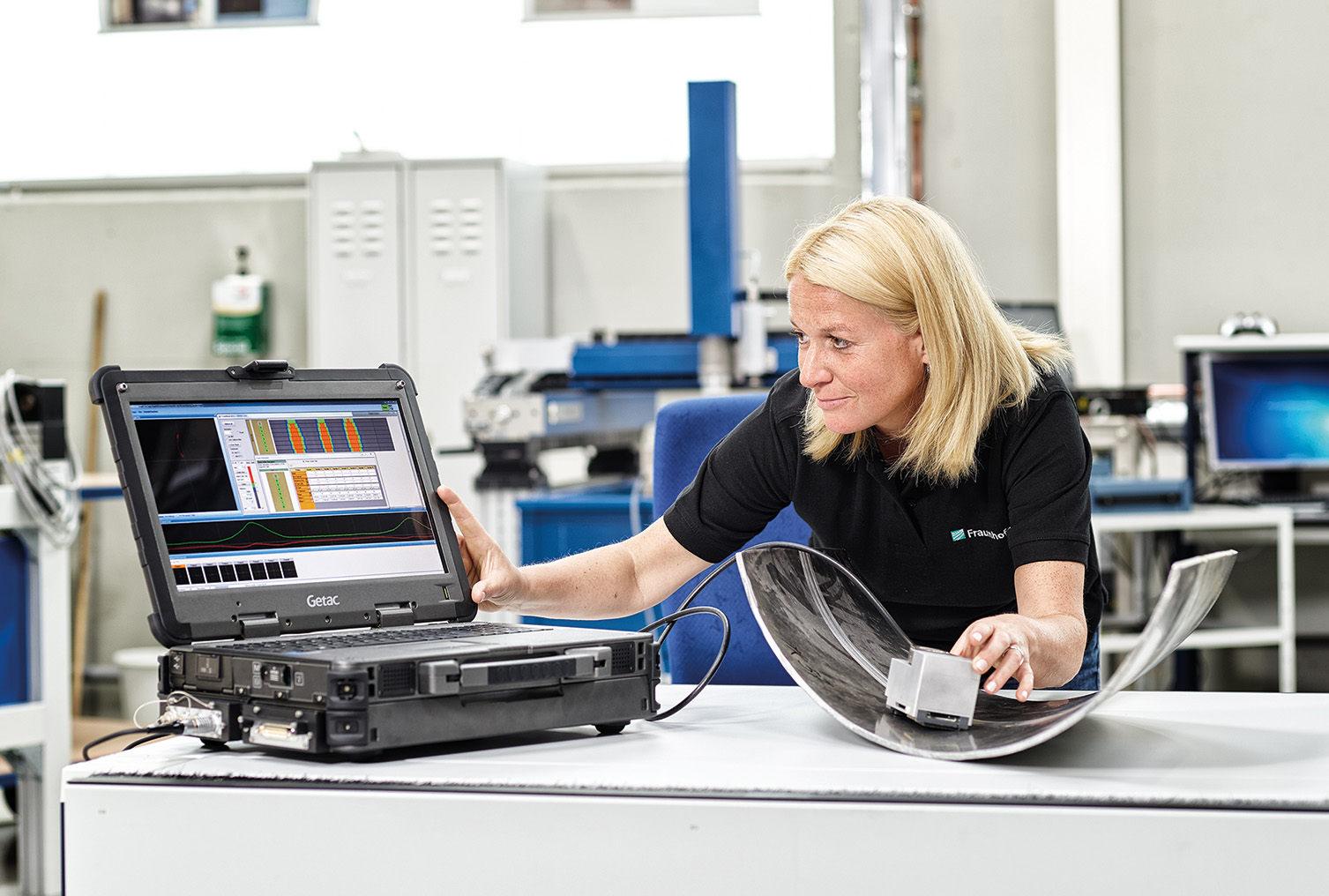


Due to the skin effect, the depth range of the eddy current method is limited to the surface-near area of test objects. In addition, it depends on the eddy current testing frequency used.
However, the depth range can be increased by reducing the testing frequency. This allows to detect flaws that are not accessible to normal eddy current testing and that are also difficult to detect by ultrasound testing, due to its dead zone near the surface. As the measuring effect of the conventional eddy current sensor is based on electromagnetic induction, which decreases with the decrease of the testing frequency, alternative receiver elements must be found for this application.
inspECT – DeepFlawDetector
The goal was to develop a sensor system that can detect deep-seated flaws, providing useful test results at low testing frequencies. Requested was:
- Testing for deep-seated flaws (cracks, corrosion, etc.) for different applications
- Testing for corrosion in sheet-metal connecting structures or inaccessible sheet-metal structures with a thick coating material
- Testing interior faults in pipes that are only accessible from their outside
- Fast area testing with optional C-scan display
- Contact-free testing with an eddy current device that is suitable for industrial applications, robust, and mobile
The DeepFlawDetector system makes use of GMR sensors. Thanks to their high magnetic field sensitivity, even at low frequencies and small dimensions GMR sensors are predestined for low-frequency eddy current testing. These characteristics allowed to evelop a compact line array sensor that is able to detect deep-seated flaws (with a covering of up to 30 mm above them) over a wide range. Using the “inspECT“ eddy current module and its software developed at the Fraunhofer IZFP allows to perform a C-scan showing the exact position and extension of the flaw within the test specimen.
Advantages
The use of GMR-based receiver elements has enabled the development of a sensor system capable of detecting deep-seated faults and offers other advantages, including:
- Fast testing without a need for coupling agents
- Constant frequency-independent testing sensitivity with high local resolution
- Fast adaptation to different test situations
- Sensor systems with 8 or 16 GMR sensors are available and/or individually configurable
- Real-time test data display in the C-scan available with simplified indicator interpretation
- Robust, mobile industrial laptop system that can also be connected to conventional eddy current sensors
Flyer “inspECT – DeepFlawDetector“
 Fraunhofer Institute for Nondestructive Testing IZFP
Fraunhofer Institute for Nondestructive Testing IZFP 